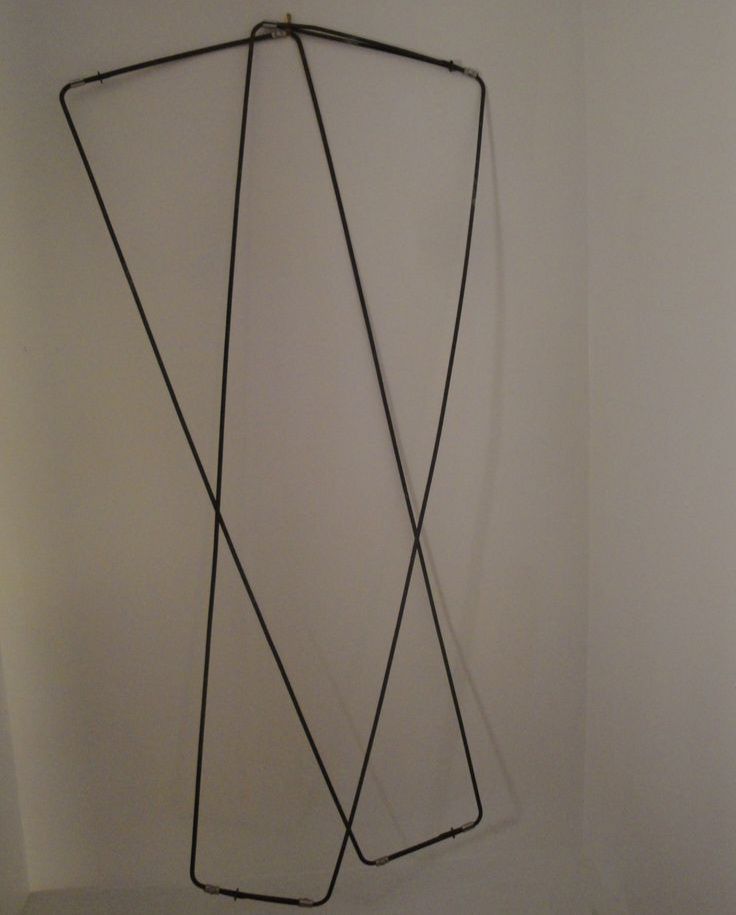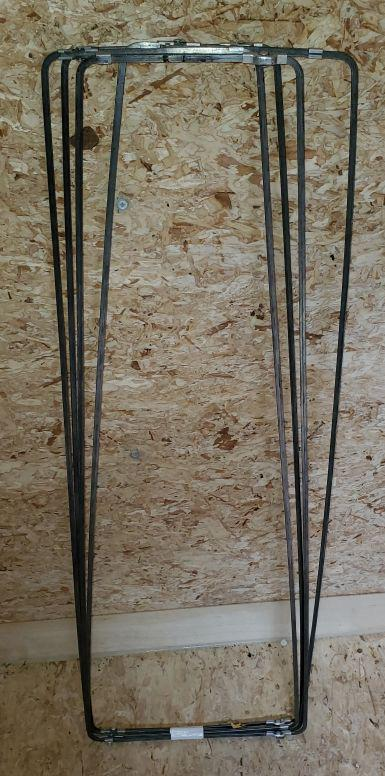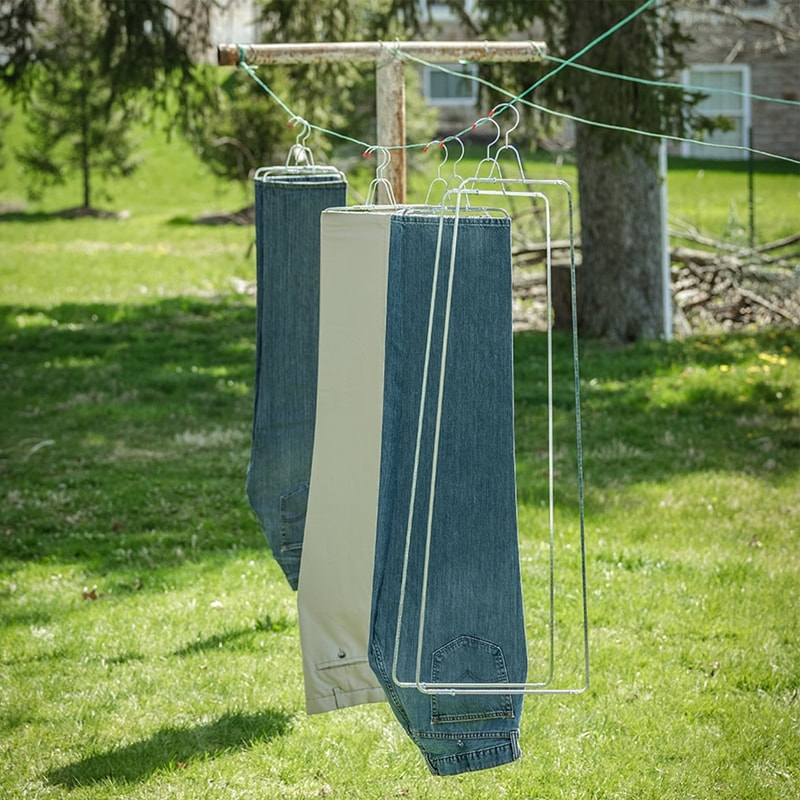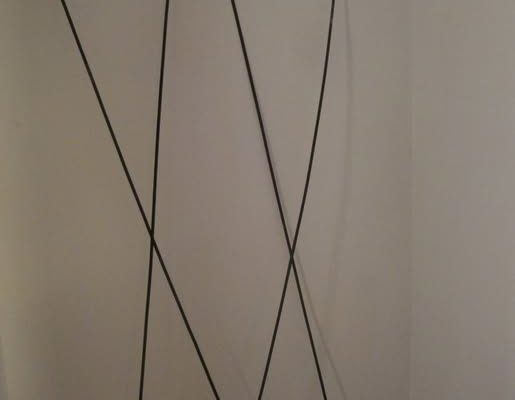The Forgotten Genius of the Trouser Stretcher: A Timeless Tool from a Pre-Dryer Era
Ever stumbled across a strange wire contraption in an attic or antique shop and thought, “What in the world is this thing?” It might’ve looked like a skeletal kite, or maybe a bizarre sculpture gone wrong. But for anyone who grew up before clothes dryers and steam irons ruled the laundry room, this wire frame wasn’t just recognizable—it was essential.
Let’s take a trip back in time and rediscover the genius of the pants stretcher, a minimal yet powerful piece of technology that once defined tidy wardrobes and wrinkle-free confidence.

A Simple Frame That Redefined Laundry Day
Picture this: it’s the 1940s, your favorite pair of slacks just came out of the wash, and there’s no tumble dryer in sight. You don’t want creases, but ironing is a chore. What do you do?
Enter the trouser stretcher—a no-frills metal frame that quietly revolutionized the way Americans cared for their clothing. Made from lightweight but sturdy metal, it was designed to slip neatly inside wet pant legs and then be hung up, either on a door frame or out in the sun. No cords. No steam. Just good old-fashioned gravity doing its thing.
How Did It Work? Minimal Design, Maximum Impact
Let’s break it down. The pants stretcher was elegantly simple:
- Two frames, shaped to match the cut of a pant leg.
- You’d slide each leg into the frame while the pants were still damp.
- Then you’d hang the frame on a hook, a line, or even a nail in the garage.
- As the pants dried, the metal frame would pull the fabric taut, eliminating wrinkles and giving the trousers that freshly-pressed, straight-leg look.
No electricity. No ironing. No fuss.
Some versions even came with adjustable widths to accommodate various pant sizes. Think of it as analog laundry tech at its finest.
Video : Pants Stretcher
Why Did People Love It So Much?
In a world before wrinkle-free fabrics and heated laundry rooms, people had to get creative. This tool was especially beloved by:
- Businessmen who needed sharp creases without daily ironing.
- Soldiers and veterans who carried their love of pressed uniforms into civilian life.
- Middle-class families who wanted their sons dressed properly for school or church.
It was economical, durable, and did its job with quiet dignity.
Before Dryers Took Over, This Was King
From the 1930s to the 1960s, the pants stretcher could be found in nearly every household across America. It was particularly popular in regions where sunshine was abundant, turning backyards and porches into drying stations. Clotheslines weren’t just functional—they were visual proof of a household that cared about order, cleanliness, and appearance.

As electric clothes dryers grew more common, these clever little frames started to fade from everyday use. But those who remember them often recall their reliability, their simplicity, and the satisfying sense of structure they gave to everyday routines.
A Symbol of Self-Reliance and Domestic Pride
There’s something deeply nostalgic about this forgotten gadget. In many ways, it represents a time when tools didn’t just solve problems—they made life feel more intentional. The pants stretcher didn’t scream for attention. It didn’t beep, flash, or break after two years. It just quietly helped folks look sharp and feel confident.
We often talk about the “good old days,” but devices like this are why that phrase exists. Back then, people didn’t toss out something because it was old—they used it until it outlived its purpose. The pants stretcher is a testament to that mindset.
Video : How To Stretch & Add Inches To Your Waistband
Is There a Place for It Today?
Oddly enough, the answer is yes.
While modern living favors speed and convenience, there’s a growing community of vintage lovers and slow-living enthusiasts who are bringing tools like these back. They’re perfect for:
- Preserving fine fabrics that can’t handle high heat from dryers.
- Living off-grid or in small homes without large appliances.
- Sustainable living, where fewer electronics mean a smaller carbon footprint.
And let’s not forget: the satisfaction of seeing a perfectly dried, wrinkle-free pair of trousers hanging in your laundry room? It’s still unmatched.
Conclusion: Not Just a Tool—A Time Machine in Wire Form
In a world where most things beep, blink, and break, the humble pants stretcher reminds us of a simpler era—one where craftsmanship, function, and style went hand in hand. Its minimal design wasn’t just clever; it was purposeful. And even though it’s mostly disappeared from modern homes, those who used it remember the pride of pressing without a press, of dressing sharp without effort.

So next time you see one tucked away at a thrift store or hanging in your grandparent’s garage, don’t dismiss it as outdated junk. That curious-looking wire frame once carried the weight of crisp slacks and daily routines—and it did so with quiet brilliance.



